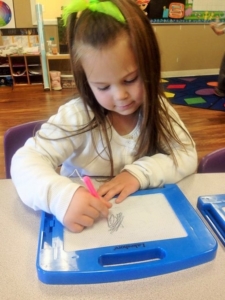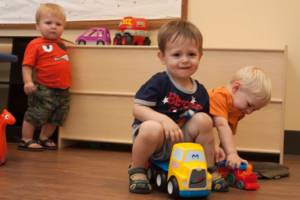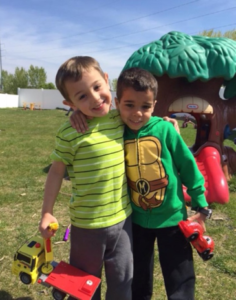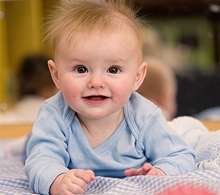 One annual tradition in families around the world is to set goals, or resolutions, on New Year’s Eve. If you and your family celebrate this tradition it is a great opportunity to start to talk to your children about how to set goal that are going to help them to achieve their personal objectives in life.
One annual tradition in families around the world is to set goals, or resolutions, on New Year’s Eve. If you and your family celebrate this tradition it is a great opportunity to start to talk to your children about how to set goal that are going to help them to achieve their personal objectives in life.
Goal setting is really a very complex endeavor and one that needs to be scaled down to an appropriate level for a child. Most children, even those that are just starting child care, can grasp the concept of having a goal and then developing a plan to achieve that goal when they focus in on one specific focus area.
Talking About Goals
A great option to help kids with goal setting is for parents, grandparents, teachers and other family members to talk about their own goals with children. This can be done in fun ways through drawing your goals or writing a story about your goals and why they are important to you.
It is critical to choose concrete, measurable goals so that children understand that these are not just wishes or dreams, they are attainable changes that they can control. Wishes and dreams are important too, but they are different than goals.
Making Family Goals Together
Moms, Dads, teachers, and other family members that interact with the children can all come together and make group goals. Group goals for families are a real bonding experience and can highlight how a family works to support each other throughout the year.
Often family New Year’s goals focus on helping each other, spending more time together, or perhaps everyone agreeing to help out at a local charity or community organization.
The key is for parents to model goal setting in their own lives and talk to children about how goals help to provide measurable milestones and accomplishments in life. Kids should be encouraged to set goals that are meaningful to them and not necessarily the same goals that the parents may have for the child.
A great exercise is to then have the family share their goals and everyone else gives one way that they will help their family member achieve his or her goal. This is a positive and relationship building exercise that is a great way to start off a new year in any household.

 We here at Premier Academy are big believers in play based learning. We understand that one of the wonderful things about being a parent is that you are your child’s first teacher. You have the unique opportunity to open the door to the world; introducing your child to words, colors, animals and so much more. Learning can be weaved into the day naturally as you read, talk, sing, and play together.
We here at Premier Academy are big believers in play based learning. We understand that one of the wonderful things about being a parent is that you are your child’s first teacher. You have the unique opportunity to open the door to the world; introducing your child to words, colors, animals and so much more. Learning can be weaved into the day naturally as you read, talk, sing, and play together.  Play along. When your child is playing dress up, caring for her baby doll, pushing a train, or pretending to grocery shop or baking some cookies, play along.
Play along. When your child is playing dress up, caring for her baby doll, pushing a train, or pretending to grocery shop or baking some cookies, play along.  Discover the outdoors.
Discover the outdoors.  It’s no doubt that children are one of life’s miracles but as our offspring we sometimes tend to forget that while they may be all that is good in us, they are not our clones and are certainly not little adults. They are incapable of handling things in the same way that we are – which means they are unable to manage stress like we can. Not to mention, something that we would easily overlook would be a severe stressor to our kids – for example, showing up at school and finding desks rearranged differently than they have been all year or a substitute teacher instead of their regular teacher.
It’s no doubt that children are one of life’s miracles but as our offspring we sometimes tend to forget that while they may be all that is good in us, they are not our clones and are certainly not little adults. They are incapable of handling things in the same way that we are – which means they are unable to manage stress like we can. Not to mention, something that we would easily overlook would be a severe stressor to our kids – for example, showing up at school and finding desks rearranged differently than they have been all year or a substitute teacher instead of their regular teacher.